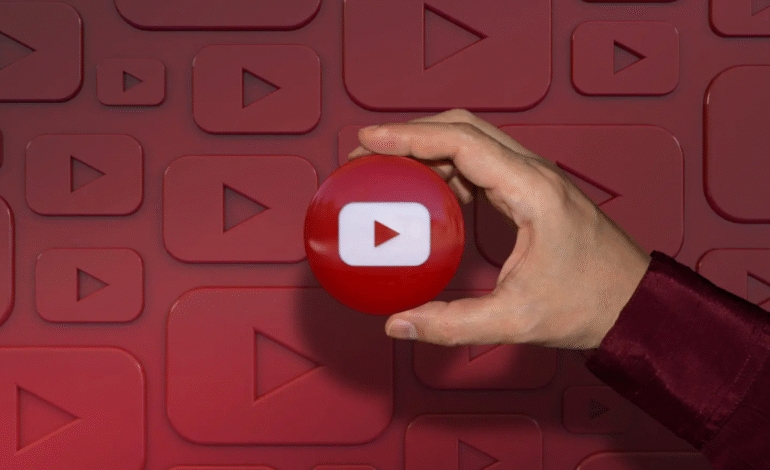YouTube 2025 Monetization Rules: Big Changes for Creators

YouTube’s creator landscape is set for a major overhaul. Starting July 15, 2025, the YouTube Partner Program (YPP) is introducing stricter monetization rules to tackle “mass-produced” and “inauthentic” content. This isn’t a minor update—it’s a bold push to prioritize originality, human creativity, and genuine engagement over low-effort, repetitive, or AI-driven videos. For creators worldwide, these changes demand immediate action and strategic adaptation to stay monetized and thrive.
What’s Changing and Why?
YouTube’s updated guidelines, shared on their official blog, refine the definition of “original” and “authentic” content—a core YPP requirement. The platform is cracking down on videos that lack creative substance or rely heavily on automated processes. The goal, per YouTube, is to “better identify mass-produced and repetitious content” that offers little value to viewers or advertisers.
This shift responds to the flood of low-quality content fueled by AI tools and templated videos, such as generic slideshows, AI-voiced narrations, or minimally edited recycled clips. Advertisers, who drive YouTube’s revenue, want their brands linked to authentic, highquality content. By tightening monetization rules, YouTube aims to protect its ecosystem and ensure ad revenue supports creators who deliver real value.
Key Areas of Focus
YouTube’s updated policy flags several types of content at risk:
- Repurposed Content with Minimal Changes: Simply tweaking someone else’s video—adding music, cropping visuals, or changing playback speed—won’t qualify as original. Content must be significantly transformed.
- Repetitive, Low-Value Content: Videos, especially Shorts, that follow predictable templates or chase views without offering entertainment, education, or inspiration face scrutiny.
- AI-Generated Content: While AI isn’t banned, videos relying heavily on automated scripts, AI voices, or generic visuals without substantial human input risk demonetization. For example, slideshows with AI narration and no creative commentary are prime targets.
- Clickbait and Spam: Channels using deceptive thumbnails, misleading titles, or loweffort uploads to game the algorithm will face penalties.
Why Now?
The timing reflects YouTube’s need to maintain trust with advertisers and viewers. The rise of AI tools has enabled creators to scale production, but it’s also led to an influx of low-effort content that dilutes platform quality. YouTube’s response prioritizes creators who bring unique value, aligning with broader industry trends seen on platforms like X, where recent posts highlight a focus on authentic engagement.
Who Will Be Impacted?
The new rules will affect creators across niches—tech reviews, vlogs, gaming, and more.
Channels most at risk include:
- Content Aggregators: Channels compiling clips from TikTok, X, or other platforms with little transformative value.
- Automated Channels: Those using AI to produce generic videos, like “Top 10” lists with AI voices or stock footage.
- Faceless Channels: While not inherently problematic, faceless channels lacking a distinct personality or creative direction may struggle.
- Low-Effort Reaction Channels: Reaction videos that merely play content without insightful commentary or context are vulnerable.
Conversely, creators producing original, high-quality content—such as in-depth tutorials, storytelling vlogs, or educational series—stand to benefit. With less competition from loweffort videos, authentic creators may see increased visibility and engagement.
Strategies to Thrive Under the New Rules
To stay monetized and succeed, creators should adapt now. Here’s how:
1. Prioritize Human Creativity
- Show Your Personality: Incorporate your voice, face (if comfortable), or unique perspective to make content stand out.
- Invest in Editing: Use B-roll, creative transitions, or text overlays to elevate production quality. Tools like Adobe Premiere or Final Cut Pro can enhance videos.
- Brand Your Content: Add a custom intro, logo, or watermark to signal originality and build trust with viewers and YouTube’s algorithm.
2. Transform Third-Party Content
If using clips from other sources, ensure significant transformation:
- Add Analysis: Break down topics like tech trends or gaming strategies with expert insights.
- Provide Education: Use clips to teach, such as explaining concepts with real-world examples.
- Craft a Narrative: Weave clips into a story, like documenting a cultural or industry trend.
3. Use AI Wisely
AI is a powerful tool, but it must support—not replace—your creativity:
- Assist, Don’t Automate: Use AI for brainstorming scripts or generating ideas, but ensure the final video reflects your input.
- Combine AI with Human Elements: Pair AI voices with personal commentary or onscreen presence.
- Be Transparent: Disclose AI use in descriptions or videos to build trust.
4. Focus on Engagement
- Build Community: Respond to comments, host live streams, or create polls to foster loyalty.
- Create Series: Develop themed content, like a series on niche topics, to keep viewers returning.
- Deliver Value: Ensure every video entertains, educates, or inspires, whether it’s a cooking tutorial or a tech review.
5. Audit Your Content
Review your channel for videos that might be flagged as repetitive or low-effort. Update them with fresh commentary or make them private to avoid demonetization.
What to Expect After July 15
YouTube will likely use AI algorithms and human reviewers to enforce the new rules. Noncompliant videos could be demonetized, channels may be removed from the YPP, or, in extreme cases, suspended. Creators can appeal but must prove their content’s originality and value. The platform’s Creator Insider channel emphasizes regular audits and transparency as key to compliance.
The Opportunity for Creators
For creators worldwide, this update is both a challenge and an opportunity. By focusing on authenticity and quality, creators can stand out in a crowded digital landscape. The global creator community, with access to advanced tools and inspiration, is well-positioned to lead in producing innovative, human-driven content.
YouTube’s 2025 monetization rules push creators to prioritize originality and engagement. By focusing on authentic, high-value content, creators can thrive in this new era.







